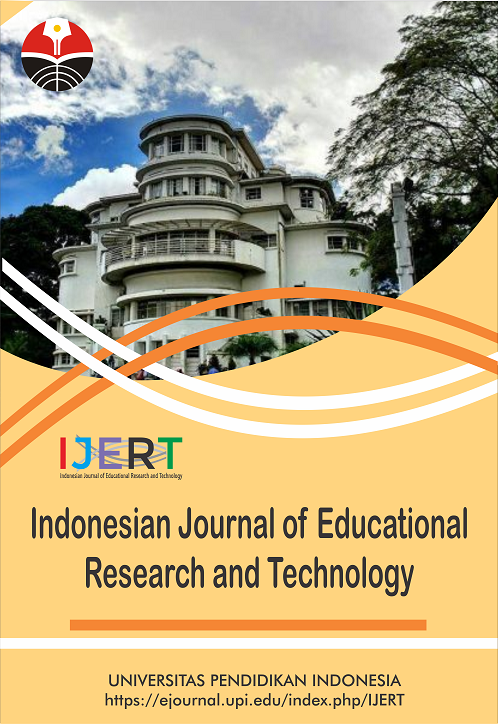Students ‘Attitude Towards the Utilization of Google Classroom for Learning
Abstract
Keywords
Full Text:
PDFReferences
Ajegbelen, A.J. (2016). The use of ICT to enhance university education in Nigeria. International Journal of Education, Learning and Development, 4(5), 1-11
Arinze, F. O., Okonkwo, E. N. and Iwunor, A. N., (2012). Information and Communication Technology (ICT) Application in Secondary Schools and Students‟ Academic Performance in Social Studies. International Multidisciplinary Journal, 6 (4), 266-278.
Bhukuvhani, C., Zezekwa, N., and Sunzuma, G. (2013). Students’ Preparedness to Integrate Information and Communication Technology Tools and Resources for the Learning of Organic Chemistry. International Journal of Education and Development using Information and Communication Technology (IJEDICT), 7(2), 27-37.
Bola, O.O. and Ogunlade, O.O. (2012). Accessibility and utilization of internet service by graduate students in University of Lagos. International Journal of Humanities and Social Science, 2(17), 254-258.
Dafiaghor, F. K. (2012) Problems and prospects of electronic resources usage in Nigerian academic libraries: Journal of Economics and International Finance, 4(9), 220-225
Hariadi, B., Dewiyani, M., and Sudarmaningtyas, P. (2016). Development of web-based learning application for generation Z. International Journal of Evaluation and Research in Education, 5(1), 60-68.
Heggart, K. R., and Yoo, J. (2018). Getting the most from google classroom: A pedagogical framework for tertiary educators. Australian Journal of Teacher Education, 43(3), 140-153.
Hussain, M. A., Iqbal, M. Z., and Akhtar, M. S. (2010). Technology based learning environment and student achievement in English as a foreign language in Pakistan. Journal of World Academy of Science, Engineering, and Technology, 61, 129-133.
Iftakhar, S. (2016, February). Google classroom: What works and how? Journal of Education and Social Sciences, 3(4), 12-18.
Krug, S. (2014). Don’t make me think, revisited: A common sense approach to web usability (3rd ed.). Berkeley, CA: New Riders.
Manca, S., and Ranieri, M. (2013). Is it a tool suitable for learning? A critical review of the literature on Facebook as a technology-enhanced learning environment. Journal of Computer Assisted Learning, 29(6), 487–504.
Olumorin, C.O., Aderoju, M.A. and Onojah, A.O. (2018). Students awareness and utilization of educational broadcasts to learn in Ogbomoso, Oyo State. Turkish Online Journal of Distance Education, 19(3), 182-192
Saffari, Z., Takmil, F., and Arabzadeh, R. (2014). The role of educational technology in medical education. Journal of Advances in Medical Education and Professionalism, 2(4), 183-183.
Mohd Shaharanee, I. N., Jamil, J., and Mohamad Rodzi, S. S. (2016). The application of Google Classroom as a tool for teaching and learning. Journal of Telecommunication, Electronic and Computer Engineering, 8(10), 5-8.
Shinsky, E. J., and Stevens, H. A. (2011, December). Teaching in educational leadership using web 2.0 applications: Perspectives on what works. Journal of Research on Leadership Education, 6(5), 195-215.
Vickers, R., Field, J., and Melakoski, C. (2015). Media culture 2020: Collaborative teaching and blended learning using social media and cloud-based technologies. Contemporary Educational Technology, 6(1), 62-73.
DOI: https://doi.org/10.17509/ijert.v2i3.44828
Refbacks
- There are currently no refbacks.
Copyright (c) 2022 Universitas Pendidikan Indonesia

This work is licensed under a Creative Commons Attribution-ShareAlike 4.0 International License.







.png)




